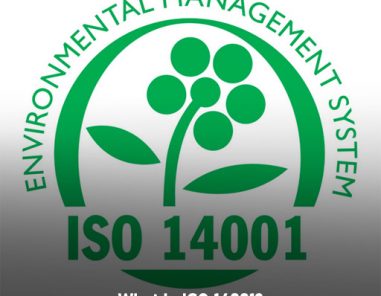
What is ISO 14001? Definition of Environmental management systems
The ISO 14001 standard is the leading standard for designing and implementing...
Read MoreDetermining the scope of your Environmental Management System (EMS) is vital for its effective functioning. This is a step that should not be taken lightly if you wish to reap benefits such as better environmental performance and acquisition of environmentally conscious customers. The following article contains some tips to help you determine the scope of your EMS.
To understand the importance of a scope, one has to understand the importance of the EMS itself. Getting ISO 14001 certification provides companies with a systematic method to continuously improve their own environmental performance. By defining the applicability and limitations of the management system, they are able to meet not only the societal expectations but also their own organisational aspirations. By defining the scope of the EMS, business owners are essentially highlighting the controllable processes, thereby increasing the efficiency of the EMS.
By highlighting the controllable processes in the EMS, you will be:

The actual definition of a scope is “a range of area included under an activity.” So, when we are talking about the ISO 14001:2015 standard, this implies to clause 4.3. Clause 4.3 of ISO 14001 urges business owners to specifically consider all variables and all factors when attempting to describe the issues that their EMS will control.
In other words, business owners are encouraged to look for all factors that can potentially affect the performance of the EMS, including the individuals who will interact with it regularly. Hence, determining the scope actually means looking at the practicality and feasibility of the management system to determine or highlight any areas that could alter its performance, both negatively or positively. Knowing the ISO 14001 certification requirements will help you get a better understanding at this stage.
This includes:
The internal and external issues are mentioned in the “context of the organisation,” section. This refers to any issue or area that can modify the functioning of the EMS. Examples of external factors include any activity that is not in the control of the parent organisation such as political factors, needs of the neighbors, market trends, and so on.
Similarly, internal factors are all factors that are under the direct control of the parent organisation including workplace policies, organisational culture, employee training, skill set deficiencies, and so forth. By using ISO consulting services, you leave this step in the hands of professional auditors
Here, boundaries refer to the limitation of the EMS and can include organisational units, functions, or actual physical boundaries. By identifying the boundaries of the EMS, you create a delineation, helping you and your future auditor understand what all needs to be regularly reviewed in order to measure the functionality of the EMS.

By defining the activities, products, and services, you further clarify the scope of your EMS. This is because every organisation has vastly different products and activities, but to have an effective EMS, it becomes necessary to define the products that the EMS needs to modify and the activities that the EMS needs to assess, in order to improve the environmental performance of the organisation. Take the example of a coffee shop versus a nuclear power station. Determining the activities will help the organisation understand how they are impacting the environment around them.
Here, it is important to highlight all authorities that have the capability to exert control or influence over the EMS. If you have appropriately identified the external issues, you would have identified the authorities and the obligations that you must adhere to in order to remain compliant and not incur legal ramifications. The EMS is only effective when the external aspects are in balance.
The ISO auditor can also help you at this stage to make sure that things are done correctly. In other types of ISO certificates, such as ISO 45001, almost similar steps are taken by the auditor. You can read the ISO 45001 audit checklist article for more information.
In order to create an effective scope statement, you must acquire a holistic approach. This is in fact one of the goals of ISO 14001 for business owners to view their business as a whole, and not dissect their environmental performance as a separate entity.
By viewing how everything is interconnected to each other, you can enhance the holistic approach that you utilise for defining your EMS. Hence, you have to understand that your responsibility does not stop at the premises of your organisation, but you are responsible for the entire life cycle of your products and services.
You must understand how your products or services would be utilised by consumers and how they would be disposed in order to truly understand how your organisation is interacting with the environment.
Furthermore, according to the standard itself, environmental management is not only focused on the upstream and downstream processes but also includes the development processes, raw material procurement processes, warehousing, transport, and disposal.
So, your focus should not remain solely on the manufacturing process, but you should emphasise continually improving your EMS so that you can actively protect the environment, and take into account the life-cycle approach and the expectations of the relevant interested parties.

A well-defined scope helps to improve the efficiency of the EMS, helping you to actively protect the environment, take into account the life-cycle approach of your services/products and consider the expectations of all interested parties. We at te ISO Council are by your side by providing ISO consulting services so that you can take the first step to implement this certification by determining the scope of ISO 14001. You can contact us for more information.
ISO certification gives your organisation a competitive edge. By helping you increase operational efficiency and overall product consistency, your business credibility and authority will soar to new heights.

Copyright © 2024 The ISO Council | Privacy Policy